
What to do?
 You have found a lot of indications on what goes wrong with the seas on our planet and why you need to be concerned, even if you do not live directly by the seashore.
You have found a lot of indications on what goes wrong with the seas on our planet and why you need to be concerned, even if you do not live directly by the seashore.
We do not, however, want you to feel helpless and disenfranchised.
Something can be done, a lot is being done already and you can add your voice and action to the chorus so as to improve the results. This section is currently under construction, so check regularly for updates.
Here are a few ideas:
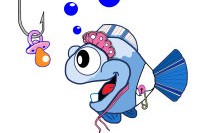 Did you know that up to 80% of European fish catches are juveniles, which have not had a chance to reproduce? You don't need university studies to know that this is self-destructive. It leaves too few big fertile fish in the water. So production goes down. Recovering resources will allow to increase catches on a robust basis.
Did you know that up to 80% of European fish catches are juveniles, which have not had a chance to reproduce? You don't need university studies to know that this is self-destructive. It leaves too few big fertile fish in the water. So production goes down. Recovering resources will allow to increase catches on a robust basis.
What to do? and how?
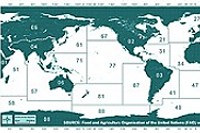 In many parts of the world, food items have to be labelled so that consumers know what they are buying. In the European Union, legislation on fish and fisheries products for human consumption requires that at least the following elements are provided in a clearly readable manner:
In many parts of the world, food items have to be labelled so that consumers know what they are buying. In the European Union, legislation on fish and fisheries products for human consumption requires that at least the following elements are provided in a clearly readable manner:
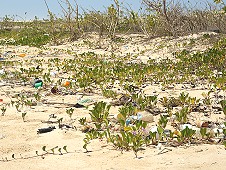 When scientists assessed the amounts of marine litter, particularly plastic introduced mostly from land-based sources, but also from ships, petroleum platforms etc., they realised that a huge quantity was missing. While we might not be sure about the details, we do observe it is breaking down into increasingly small pieces over time, many of which are being mistaken for food by sea birds and all kinds of marine life, including whales. The last strandings of whales, e.g. one off the Netherlands in early 2014, revealed dozens of kg of plastic in the stomach - leading to starvation and death. Other parts are thought to be sinking down and being carried through marine currents all over the huge ocean ecosystem. Plastic debris of different size has been found literrally from top to bottom of the water column in the ocean. That's scary.
When scientists assessed the amounts of marine litter, particularly plastic introduced mostly from land-based sources, but also from ships, petroleum platforms etc., they realised that a huge quantity was missing. While we might not be sure about the details, we do observe it is breaking down into increasingly small pieces over time, many of which are being mistaken for food by sea birds and all kinds of marine life, including whales. The last strandings of whales, e.g. one off the Netherlands in early 2014, revealed dozens of kg of plastic in the stomach - leading to starvation and death. Other parts are thought to be sinking down and being carried through marine currents all over the huge ocean ecosystem. Plastic debris of different size has been found literrally from top to bottom of the water column in the ocean. That's scary.
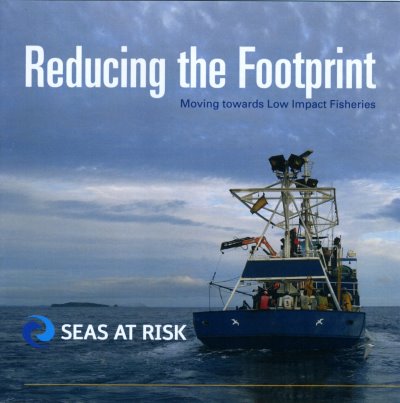 High impact fisheries come in many different guises. Bottom trawl fisheries "plough" the sea bottom and destroy the living space of many marine species. They also harm the ecosystem by catching lots of unwanted fish and invertebrate species that are subsequently thrown overboard dead or dying, so-called bycatch. It's also wasteful from an energy and general resource point of view. What we should strive for are low impact fisheries that do not harm or threaten ecosystems, habitats, and non-target species.
High impact fisheries come in many different guises. Bottom trawl fisheries "plough" the sea bottom and destroy the living space of many marine species. They also harm the ecosystem by catching lots of unwanted fish and invertebrate species that are subsequently thrown overboard dead or dying, so-called bycatch. It's also wasteful from an energy and general resource point of view. What we should strive for are low impact fisheries that do not harm or threaten ecosystems, habitats, and non-target species.
 Let us state upfront: not all subsidies are bad. Subsidies serving to increase safety at sea, support research and management and scrap fishing capacity and helping people to build up alternatives to fishing are good.
Let us state upfront: not all subsidies are bad. Subsidies serving to increase safety at sea, support research and management and scrap fishing capacity and helping people to build up alternatives to fishing are good.
 An increasingly popular way to make responsible purchasing decisions is by using one of the growing number of seafood guides. These now exist in several countries and are issued by several organisations taking into account scientific assessments of the state of the resource and the fishery. Some add criteria such as respect for labour laws and other aspects of sustainability.
An increasingly popular way to make responsible purchasing decisions is by using one of the growing number of seafood guides. These now exist in several countries and are issued by several organisations taking into account scientific assessments of the state of the resource and the fishery. Some add criteria such as respect for labour laws and other aspects of sustainability.
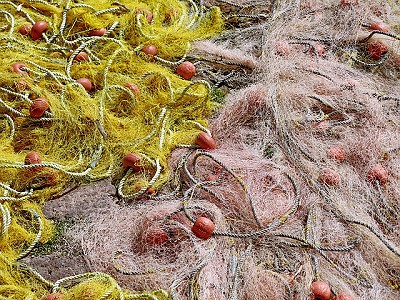 Highlights on the state of play in 2015 with particular attention to West Africa.
Highlights on the state of play in 2015 with particular attention to West Africa.
Mundus maris shares recent developments at the national and global level aimed at developing and introducing standardised processes and procedures that increase transparency in the fisheries sector. Transparency encompasses a trilogy that calls for participation, commitment and engagement of governmental, private sector and civil society representatives. The FiTI has meanwhile been expanded, but lots of issues await more robust resolution.
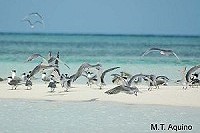 Marine Protected Areas (MPAs) are zones of different degree of protection from human intervention for the habitat and the species living in that space of the sea. They can have similar objectives as protected areas on land, though can be more difficult to enforce. Because technological advances in ships, fishing gear and positioning and fish locating equipment has been so dramatic, many previously natural reserves (e.g. in zones with heavy boulders on the sea floor, or near the border of polar ice) have become accessible to modern fishing vessels.
Marine Protected Areas (MPAs) are zones of different degree of protection from human intervention for the habitat and the species living in that space of the sea. They can have similar objectives as protected areas on land, though can be more difficult to enforce. Because technological advances in ships, fishing gear and positioning and fish locating equipment has been so dramatic, many previously natural reserves (e.g. in zones with heavy boulders on the sea floor, or near the border of polar ice) have become accessible to modern fishing vessels.







